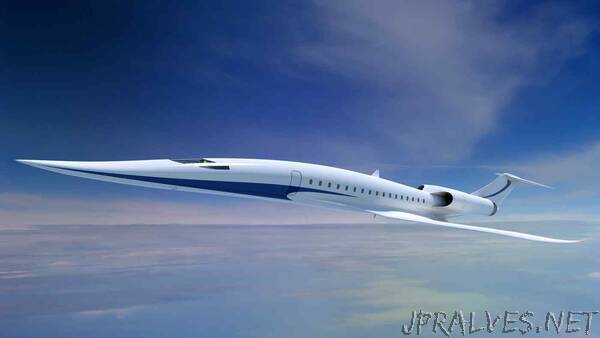
“Tired of merely supplying parts for Western aircraft, major Japanese engineering companies including IHI and Mitsubishi Heavy Industries are joining forces with Japan’s space agency on research and development in supersonic passenger jets, seen as a key step in the next generation of transportation.
Their new public-private initiative, Japan Supersonic Research, was announced Wednesday. Members also include Kawasaki Heavy Industries, Subaru and Japan Aircraft Development Corp. The group aims to participate in international projects with such companies as Boeing, starting around 2030 or so.
The project could create new opportunities for Japan’s aerospace industry, which is now mostly limited to building wings and fuselages for big aircraft makers elsewhere, such as Boeing and Airbus. Setting up a single research center may enable companies here to not only set a direction for this new technology, but also boost their profit margins.
Supersonic jets can slash travel time between Tokyo and San Francisco from 10 hours to six. Though fares will likely exceed those for conventional planes, estimates suggest demand for 1,000 to 2,000 supersonic aircraft over the next decade to serve corporate executives, high-level government officials and wealthy travelers. Supersonic flight could also speed disaster response.
Among the main hurdles to commercializing the technology are sonic booms, the loud shock waves created when a plane crosses the sound barrier. The Concorde, a supersonic passenger jet introduced in the 1970s and retired in 2003, was barred from flying faster than sound over land.
The Japan Aerospace Exploration Agency (JAXA) has worked for a decade on the sonic boom problem. It has developed a streamlined aircraft design with a long, sharply pointed nose to minimize booms and is now hammering out the details.
Manufacturers participating in the new initiative will bring their own aviation expertise to the table. Kawasaki Heavy has large-scale facilities that can measure the impact of wind on an aircraft frame and the noise it produces, and the company plans to leverage Japan’s strengths in environmentally friendly technology, a challenge in jet development. IHI can improve the fuel efficiency of aircraft engines.
As of 2020, JAXA had succeeded in reducing fuel consumption by 13% compared with the technology used in the Concorde through such steps as reducing air friction. It has also made the aircraft 21% lighter overall and is running trials to determine the impact on fuel requirements.
Other companies are also making strides in this area, especially in the U.S. Colorado-based startup Boom Supersonic’s Overture model will seat up to 88 passengers and is expected to cost around $200 million. United Airlines has agreed to buy 15 of the jets, aiming to begin commercial service in 2029, and Japan Airlines has invested in the company as well.
Japan’s aerospace industry has lagged behind counterparts in the U.S. and Europe. Mitsubishi Heavy unit Mitsubishi Aircraft has frozen a long-delayed effort to build the nation’s first homegrown passenger jet.
But while bringing supersonic planes to market will be a challenge, Masahiro Kanazaki, a professor at the aeronautics and astronautics department of Tokyo Metropolitan University, thinks that Japanese players have a chance to come out ahead.
“JAXA and others in Japan have accumulated some of the world’s highest-level technology and research for supersonic aircraft,” Kanazaki said.
And R&D in this area could benefit other fields. “Technology for countering noise and reducing air resistance can be applied to drones and other aircraft,” said Hiroki Nagai, a professor at Tohoku University’s Institute of Fluid Science.”
